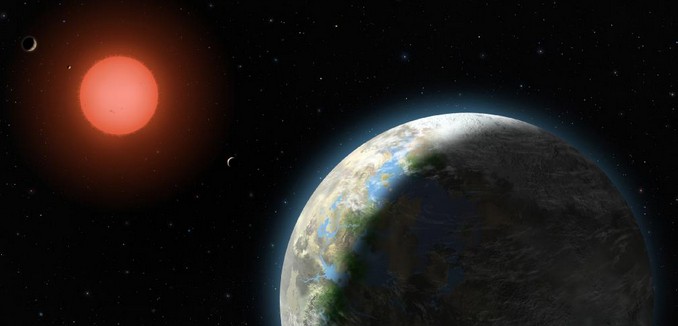An international team of scientists and astronomers has announced the discovery of a planet with a mass similar to that of Earth, orbiting Proxima Centauri — the closest star neighbor to our solar system.
The collaboration of scientists from nine countries, known as the “Pale Red Dot” and led by Dr. Guillem Anglada-Escudé of the Queen Mary University of London, includes the Weizmann Institute of Science’s Dr. Aviv Ofir.
The rocky planet is named Proxima b. Researchers say that because it is within the habitable zone of its star, liquid water could potentially exist on its surface and it may be the closest possible home for life outside of our solar system.
Ofir said that Proxima Centauri — a low-mass red dwarf star with a diameter about one seventh that of our Sun and far dimmer — has been studied for the past century, but only now have observations become sensitive enough to decisively detect the presence of this new small planet.
“We discovered the planet with an observatory in Chile. We can’t see Proxima Centauri from our observatories in Israel,” he said. “It is well below the southern horizon, so it is unobservable from Israel all year round.”
The planet was discovered through measurements of the radial velocity of the star. Such measurements rely on the Doppler effect — the shift in wavelength as an object moves closer or away from the viewer. The star, according to the team’s measurements, is 1.3 times the size of Earth and orbits its star every 11.2 days.
According to the astronomers, Proxima b is 4.2 light-years away from our solar system.
“It’s not only the closest terrestrial planet found, it’s probably the closest planet outside our solar system that will ever be found because there is no star closer to the solar system than this one,” said lead study author Anglada-Escudé.
Although conditions on the Proxima b planet’s surface are as yet unclear, the scientific team hopes to learn more about this planet in further research. Ofir said that it is not at all clear whether life as we know it could have evolved on the planet, and the subject is already the focus of intense debate.
The scientists will continue to research Proxima b, trying to determine whether there is water on the surface, if the planet has an atmosphere, how it evolved, and if the planet has a protective magnetic field.
As part of this research, Ofir will continue to work on identifying and studying planets around Proxima Centauri.
(via Israel21c)
[Photo: NASA ]




